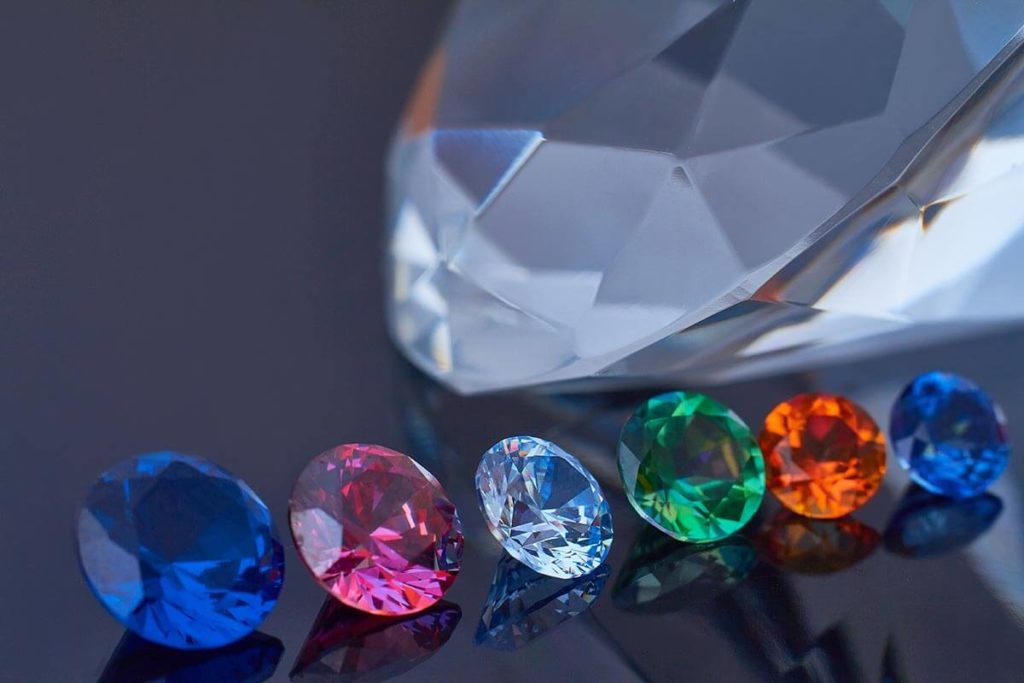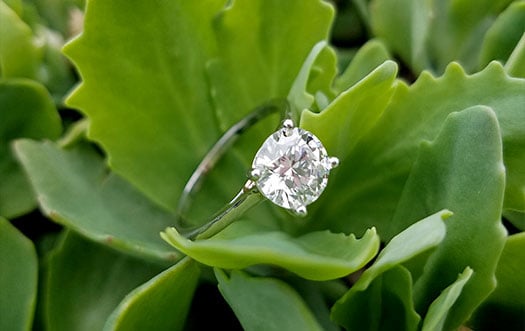
Table of Contents
What Are Inclusions in Diamonds?
Inclusions in diamonds are basically defects or unfamiliar materials caught inside the diamond during its development. These inclusions can be anything from tiny gas air pockets to infinitesimal sections of different minerals. In the realm of regular diamonds, inclusions are utilized by gemologists to recognize and grade a diamond’s quality, since each inclusion is novel.
Normal versus Lab-Grown Diamonds
The critical contrast among normal and lab-grown diamonds lies in their origin. Normal diamonds structure north of millions of years under outrageous intensity and strain profound within the Earth. As they solidify, different inclusions in lab grown diamonds can frame. Lab-grown diamonds, then again, are created in merely weeks or months using cutting edge innovation like High Strain High Temperature (HPHT) or Substance Fume Testimony (CVD) techniques.
However the two kinds of diamonds might share comparative actual properties, lab-grown diamonds can at times have various sorts of inclusions compared to regular diamonds. A few inclusions in lab-grown diamonds are an immediate consequence of the development cycle, while others are brought about by the strategies used to make the diamond.
The Arrangement of Lab-Grown Diamonds
Lab-grown diamonds are delivered using two main strategies: HPHT and CVD. The two techniques copy the regular cycles that happen profound within the Earth however on a lot quicker timeline.
HPHT versus CVD Strategies for Diamond Creation
HPHT (High Tension High Temperature): This technique repeats the outrageous strain and temperature conditions viewed as far below the World’s surface. It involves placing carbon in a press where both intensity and strain are applied, forcing the carbon iotas to bond and frame a diamond.
CVD (Compound Fume Testimony): In this cycle, a diamond seed is put in a chamber loaded up with carbon-rich gases. The gases are warmed to make plasma, causing the carbon particles to cling to the seed and structure a diamond layer by layer.
How Inclusions Structure in Lab-Grown Diamonds
Inclusions in lab-grown diamonds can be brought about by the development climate, the material utilized all the while, and even the actual gear. For instance, in HPHT diamonds, metal inclusions can some of the time structure when the metal impetus utilized during the cycle becomes caught in the gem. CVD diamonds, then again, may contain gas bubbles or different types of buildup from the substance fume.
Sorts of Inclusions Found in Lab-Grown Diamonds
Not all inclusions are something very similar. Lab-grown diamonds can contain different sorts of inclusions, each with its special attributes.
Gas Air pockets
Gas bubbles, otherwise called “fume stage inclusions,” are one of the most well-known kinds of inclusions in lab-grown diamonds. These tiny air pockets of gas become caught inside the diamond during the development interaction, normally during the CVD technique. While they are often little and challenging to see, bigger gas air pockets can influence the diamond’s lucidity and brightness.
Metallic Inclusions
In HPHT diamonds, metallic inclusions are a result of the metal impetus used to develop the diamond. These inclusions are often infinitesimal and may show up as little, metallic parts caught within the diamond. While they are not generally so apparent as a few different kinds of inclusions, they can in any case affect the diamond’s general appearance and lucidity.
Precious stone Inclusions
Gem inclusions happen when different minerals or precious stones become caught in the diamond as it structures. These inclusions can at times be noticeable under amplification and may try and add an extraordinary person to the diamond. Notwithstanding, as different inclusions, they can influence the diamond’s lucidity grade.
What Inclusions Mean for the Worth of Lab-Grown Diamonds
Inclusions can fundamentally influence a diamond’s worth, whether it’s normal or lab-grown. Nonetheless, the effect of inclusions on lab-grown diamonds is often seen contrastingly compared to their regular partners.
Size and Perceivability of Inclusions
The bigger and more noticeable the inclusion, the more it can influence the diamond’s clearness and, subsequently, its cost. For lab-grown diamonds, clearness is reviewed on a comparable scale to regular diamonds, from Impeccable (no inclusions apparent under 10x amplification) to Included (inclusions noticeable to the unaided eye). Diamonds with less and more modest inclusions are commonly more significant.
Uncommonness of Inclusions
Very much like rare inclusions in normal diamonds, certain inclusions in lab-grown diamonds can make them more important. For instance, a few inclusions might be viewed as “extraordinary” or normal for a specific lab-grown diamond, giving it an enticement for gatherers or those looking for something exceptional.
Kinds of Inclusions and Their Impact on Pricing
Not all inclusions influence the worth of a lab-grown diamond similarly. Gas rises, while normal in CVD diamonds, might not essentially influence the value assuming they’re little or dissipated. Then again, metallic inclusions in HPHT diamonds can diminish the diamond’s worth, as they might be more noticeable under amplification and can influence the general clearness.
Identifying Inclusions in Lab-Grown Diamonds
Identifying inclusions is a basic part of diamond grading, and it requires accuracy. There are multiple ways of detecting and examine inclusions in lab-grown diamonds.
Magnifying lens and Amplification
One of the most widely recognized devices used to distinguish inclusions is a gemological magnifying instrument, which permits gemologists to examine a diamond’s internal construction intently. Amplification of 10x or more uncovers tiny inclusions that are generally invisible to the unaided eye. This interaction is fundamental for grading the clearness of a diamond.
The Job of Accreditation Labs
While purchasing a lab-grown diamond, numerous buyers depend on certificate reports from legitimate labs like GIA (Gemological Institute of America) or IGI (International Gemological Institute). These reports give nitty gritty information about the diamond’s lucidity, including the sort, size, and area of any inclusions, offering transparency and genuine serenity for the buyer.
Moral and Natural Contemplations
One of the essential reasons individuals pick lab grown diamonds is the natural and moral worries related with mined diamonds. Lab-grown diamonds are often viewed as an additional sustainable and moral other option, as they are created in controlled conditions with less natural effects.
Transparency and Sourcing
Lab-grown diamonds are commonly more transparent regarding their sourcing and creation techniques. Since they are made in labs, customers have a clearer understanding of where their diamonds come from and how they are made, which can give true serenity to those worried about deceptive practices in diamond mining.
Final Contemplations: Would it be advisable for you to Stress Over Inclusions in Lab-Grown Diamonds?
Inclusions in lab-grown diamonds are a significant element to consider while choosing the right stone for your requirements. While they might influence the diamond’s lucidity and cost, they don’t be guaranteed to influence its general magnificence or strength. Many individuals find the special inclusions of lab-grown diamonds to be important for their appeal. At last, whether you ought to be worried about inclusions relies upon your own inclinations and the nature of the diamond you are seeking.





